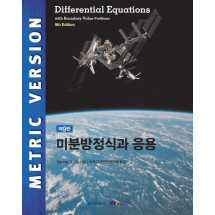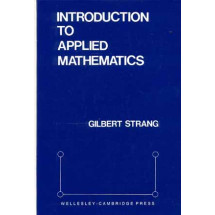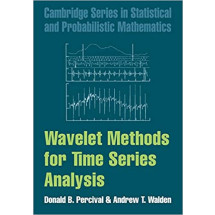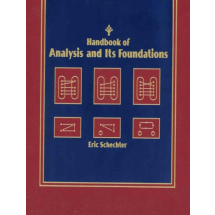Preface xiii
About the Companion Website xix
1 Quality Improvement and Management 1
1.1 Introduction 1
1.2 Statistical Quality Control 1
1.2.1 Quality and the Customer 2
1.2.2 Quality Improvement 3
1.2.3 Quality and Productivity 5
1.3 Implementing Quality Improvement 6
1.3.1 Outcomes of Quality Control 7
1.3.2 Quality Control and Quality Improvement 7
1.3.2.1 Acceptance Sampling Plans 7
1.3.2.2 Process Control 8
1.3.2.3 Removing Obstacles to Quality 8
1.3.2.4 Eliminating Productivity Quotas 9
1.3.3 Implementing Quality Improvement 9
1.4 Managing Quality Improvement 10
1.4.1 Management and Their Responsibilities 10
1.4.2 Management and Quality 11
1.4.3 Risks Associated with Making Bad Decisions 11
1.5 Conclusion 12
2 Basic Concepts of the Six Sigma Methodology 13
2.1 Introduction 13
2.2 What Is Six Sigma? 13
2.2.1 Six Sigma as a Management Philosophy 13
2.2.2 Six Sigma as a Systemic Approach to Problem Solving 14
2.2.3 Six Sigma as a Statistical Standard of Quality 15
2.2.3.1 Statistical Basis for Six Sigma 16
2.2.4 Six Sigma Roles 18
2.3 Is Six Sigma New? 19
2.4 Quality Tools Used in Six Sigma 20
2.4.1 The Basic Seven Tools and the New Seven Tools 20
2.4.2 Lean Tools 21
2.4.2.1 Eight Wastes 21
2.4.2.2 Visual Management 22
2.4.2.3 The 5S Method 23
2.4.2.4 Value-Stream Mapping 24
2.4.2.5 Mistake-Proofing 24
2.4.2.6 Quick Changeover 24
2.5 Six Sigma Benefits and Criticism 25
2.5.1 Why Do Some Six Sigma Initiatives Fail? 25
Review Practice Problems 26
3 Describing Quantitative and Qualitative Data 27
3.1 Introduction 27
3.2 Classification of Various Types of Data 27
3.3 Analyzing Data Using Graphical Tools 29
3.3.1 Frequency Distribution Tables for Qualitative and Quantitative Data 29
3.3.1.1 Qualitative Data 30
3.3.1.2 Quantitative Data 31
3.4 Describing Data Graphically 33
3.4.1 Dot Plots 33
3.4.2 Pie Charts 34
3.4.3 Bar Charts 36
3.4.4 Histograms 41
3.4.5 Line Graphs 43
3.4.6 Measures of Association 45
3.5 Analyzing Data Using Numerical Tools 49
3.5.1 Numerical Measures 49
3.5.2 Measures of Centrality 49
3.5.2.1 Mean 50
3.5.2.2 Median 51
3.5.2.3 Mode 53
3.5.3 Measures of Dispersion 54
3.5.3.1 Range 54
3.5.3.2 Variance 55
3.5.3.3 Standard Deviation 56
3.5.3.4 Empirical Rule 58
3.5.3.5 Interquartile Range 60
3.5.4 Box-and-Whisker Plot 61
3.6 Some Important Probability Distributions 63
3.6.1 The Binomial Distribution 63
3.6.1.1 Binomial Probability Tables 64
3.6.2 The Hypergeometric Distribution 65
3.6.2.1 Mean and Standard Deviation of a Hypergeometric Distribution 68
3.6.3 The Poisson Distribution 69
3.6.3.1 Mean and Standard Deviation of a Poisson Distribution 71
3.6.3.2 Poisson Probability Tables 71
3.6.4 The Normal Distribution 73
Review Practice Problems 80
4 Sampling Methods 89
4.1 Introduction 89
4.2 Basic Concepts of Sampling 89
4.2.1 Introducing Various Sampling Designs 91
4.3 Simple Random Sampling 93
4.3.1 Estimating the Population Mean and Population Total 94
4.3.2 Confidence Interval for the Population Mean and Population Total 98
4.3.3 Determining Sample Size 99
4.4 Stratified Random Sampling 100
4.4.1 Estimating the Population Mean and Population Total 100
4.4.2 Confidence Interval for the Population Mean and Population Total 103
4.4.3 Determining Sample Size 105
4.5 Systematic Random Sampling 107
4.5.1 Estimating the Population Mean and Population Total 107
4.5.2 Confidence Interval for the Population Mean and Population Total 109
4.5.3 Determining the Sample Size 109
4.6 Cluster Random Sampling 112
4.6.1 Estimating the Population Mean and Population Total 112
4.6.2 Confidence Interval for the Population Mean and Population Total 114
4.6.3 Determining the Sample Size 116
Review Practice Problems 117
5 Phase I Quality Control Charts for Variables 123
5.1 Introduction 123
5.2 Basic Definition of Quality and Its Benefits 123
5.3 Statistical Process Control 124
5.3.1 Check Sheets 126
5.3.2 Pareto Chart 128
5.3.3 Cause-and-Effect (Fishbone or Ishikawa) Diagrams 129
5.3.4 Defect-Concentration Diagrams 130
5.3.5 Run Charts 131
5.4 Control Charts for Variables 133
5.4.1 Process Evaluation 133
5.4.2 Action on the Process 133
5.4.3 Action on the Output 133
5.4.4 Variation 133
5.4.4.1 Common Causes (Random Causes) 134
5.4.4.2 Special Causes (Assignable Causes) 134
5.4.4.3 Local Actions and Actions on the System 134
5.4.4.4 Relationship Between Types of Variation 134
5.4.5 Control Charts 135
5.4.5.1 Preparation for Using Control Charts 136
5.4.5.2 Benefits of Control Charts 137
5.4.5.3 Rational Samples for control Charts 137
5.5 Shewhart X and R Control Charts 141
5.5.1 Calculating Sample Statistics 141
5.5.2 Calculating Control Limits 141
5.5.3 Interpreting Shewhart X and R Control Charts 146
5.5.4 Extending the Current Control Limits for Future Control 147
5.6 Shewhart X and R Control Charts When the Process Mean and Standard Deviation are Known 149
5.7 Shewhart X and R Control Charts for Individual Observations 150
5.8 Shewhart X and S Control Charts with Equal Sample Sizes 154
5.9 Shewhart X and S Control Charts with Variable Sample Sizes 157
5.10 Process Capability 161
6 Phase I Control Charts for Attributes 173
6.1 Introduction 173
6.2 Control Charts for Attributes 173
6.3 The p Chart: Control Charts for Nonconforming Fractions with Constant Sample Sizes 174
6.3.1 Control Limits for the p Control Chart 175
6.3.2 Interpreting the Control Chart for Nonconforming Fractions 176
6.4 The p Chart: Control Chart for Nonconforming Fractions with Variable Samples Sizes 179
6.5 The np Chart: Control Charts for the Number of Nonconforming Units 182
6.5.1 Control Limits for np Control Charts 183
6.6 The c Control Chart – Control Charts for Nonconformities per Sample 184
6.7 The u Chart 188
Review Practice Problems 193
7 Phase II Quality Control Charts for Detecting Small Shifts 201
7.1 Introduction 201
7.2 Basic Concepts of CUSUM Control Charts 202
7.2.1 CUSUM Control Charts vs. Shewhart X and R Control Charts 202
7.3 Designing a CUSUM Control Chart 205
7.3.1 Two-Sided CUSUM Control Charts Using the Numerical Procedure 206
7.3.2 The Fast Initial Response (FIR) Feature for CUSUM Control Charts 212
7.3.3 One-Sided CUSUM Control Charts 216
7.3.4 Combined Shewhart-CUSUM Control Charts 216
7.3.5 CUSUM Control Charts for Controlling Process Variability 217
7.4 Moving Average (MA) Control Charts 218
7.5 Exponentially Weighted Moving Average (EWMA) Control Charts 223
Review Practice Problems 229
8 Process and Measurement System Capability Analysis 237
8.1 Introduction 237
8.2 Development of Process Capability Indices 238
8.3 Various Process Capability Indices 239
8.3.1 Process Capability Index: Cp 239
8.3.2 Process Capability Index: Cpk 244
8.3.3 Process Capability Index: Cpm 247
8.3.4 Process Capability Index: Cpmk 249
8.3.5 Process Capability Index: Cpnst 250
8.3.5.1 Comparing Cpnst with Cpk and Cpm 252
8.3.5.2 Other Features of Cpnst 253
8.3.6 Process Performance Indices: Pp and Ppk 254
8.4 Pre-control 255
8.4.1 Global Perspective on the Use of Pre-control – Understanding the Color-Coding Scheme 257
8.4.2 The Mechanics of Pre-control 258
8.4.3 The Statistical Basis for Pre-control 259
8.4.4 Advantages and Disadvantages of Pre-control 259
8.4.4.1 Advantages of Pre-control 260
8.4.4.2 Disadvantages of Pre-control 260
8.5 Measurement System Capability Analysis 261
8.5.1 Evaluating Measurement System Performance 262
8.5.2 The Range Method 262
8.5.3 The ANOVA Method 268
8.5.4 Graphical Representation of a Gauge R&R Study 272
8.5.5 Another Measurement Capability Index 275
Review Practice Problems 275
9 Acceptance Sampling Plans 283
9.1 Introduction 283
9.2 The Intent of Acceptance Sampling Plans 283
9.3 Sampling Inspection vs. 100% Inspection 284
9.4 Classification of Sampling Plans 284
9.4.1 Formation of Lots for Acceptance Sampling Plans 285
9.4.2 The Operating Characteristic (OC) Curve 285
9.4.3 Two Types of OC Curves 288
9.4.4 Some Terminology Used in Sampling Plans 288
9.5 Acceptance Sampling by Attributes 292
9.5.1 Acceptable Quality Limit (AQL) 292
9.5.2 Average Outgoing Quality (AOQ) 292
9.5.3 Average Outgoing Quality Limit (AOQL) 293
9.5.4 Average Total Inspection (ATI) 293
9.6 Single Sampling Plans for Attributes 296
9.7 Other Types of Sampling Plans for Attributes 296
9.7.1 Double-Sampling Plans for Attributes 296
9.7.2 The OC Curve 297
9.7.3 Multiple-Sampling Plans 301
9.7.4 Average Sample Number 301
9.7.5 Sequential-Sampling Plans 301
9.8 ANSI/ASQ Z1.4-2003 Sampling Standard and Plans 305
9.8.1 Levels of Inspection 306
9.8.2 Types of Sampling 308
9.9 Dodge-Romig Tables 309
9.10 ANSI/ASQ Z1.9-2003 Acceptance Sampling Plans by Variables 309
9.10.1 ANSI/ASQ Z1.9-2003 – Variability Known 310
9.10.2 Variability Unknown – Standard Deviation Method 311
9.10.3 Variability Unknown – Range Method 313
9.11 Continuous-Sampling Plans 314
9.11.1 Types of Continuous-Sampling Plans 315
9.11.2 Dodge’s Continuous Sampling Plans 315
9.11.3 MIL-STD-1235B 315
Review Practice Problems 316
10 Computer Resources to Support SQC: Minitab, R, JMP, and Python 339
Appendix A Statistical Tables 341
Appendix B Answers to Selected Practice Problems 357
Bibliography 361
Index 365














